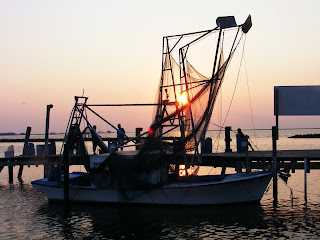Nutria is considered an invasive species in Southeastern Louisiana. In a place where salt marshes and estuaries enable shrimp populations, and in turn enable human populations, the increase of personage has itself become an invasive species. Human constructs, piled atop of technologies and scientific understanding of materials, and creates an artificial ecology. Just as the nutria disrupt the indigenous ecology by eating the roots of cord grass, human commoditization as a collective artifact serves as an organism which not only disrupts the natural ecological systems, but also anthropogenic systems such as trade, commerce, and subsistence. We know this.
Scientific measurements of beach profiles and their associated theories of geology couple with indigenous knowledge systems to expose key pragmatisms. Both western science and traditional ecological knowledge understand that shrimp rely on cord grass to populate. Both recognized sedimentary deposits from cyclical floods and river movement created the land base for salt marshes. Both are able to determine that the local ecology is changing due to gradual northward movement of salt-water. Both recognize that the system is disrupted by human interference, and that through human interference the ecology is destabilizing. However, the key epistemological difference stems around the concept of sustainability. Oil & gas production has the ability to sustain a community within our current social economy, however both traditional ecological knowledge, regardless of ethnicity, begrudgingly recognizes the impossible sustainability of current oil & gas based economies due to both gradual impacts such as climate change, and immediate impacts such as the April 2010 Deep Water Horizon oil spill.
So what is this aspect of human civilization which drives us? Pre-contact Era indigenous populations operated in a sociopolitical system which was resource-based, while the colonial systems of value where trust-based. As the social ecologies evolved through time, the trust-resource relation transformed the deltaic regions of Louisiana in congruence with the commoditization of plant, animal, and mineral resources. In our current state, where a global society emerges, the trust/resource relationship begins to conflict with human/nature relationships necessary to sustain homeostasis. The cultural value systems also change, however key principles, most notably family, still retain key social dominance.
As for the qunatitive/qualitive data for these concepts, their scattered across the journals of high school students, PowerPoint presentations, local oratory, Facebook posts, YouTube videos, each an immediately discernable pragmatism which illuminates a key truth. These “truths,” are impossible to describe in their complete context simply because we are incapable of the entire cognitive synthesis. Just as a gorilla might learn to add, yet will never be able to derive calculus equations, we as humans our limited by our own biology. However, we are enlightened enough to recognize ourselves as part of a grander system, with its own biology. It is in our relationship to the other parts of this system, be they mineral resources, economic drivers, biological organization, or even the mysterious emergence of civilization, we acknowledge our place on this planet. Furthermore, we acknowledge each other as humans, as family, each indigenous to this planet
We cannot create anything. We can only manipulate. We have a choice, and we have responsibility so far as we collectively choose to acknowledge it. Oil & gas resources are finite. Nature ultimately defeats all anthropogenic manipulation over a period of time. However, below our artifice, we have an inherent relationship with all of our relatives; human or otherwise.
Patrick Freeland

































